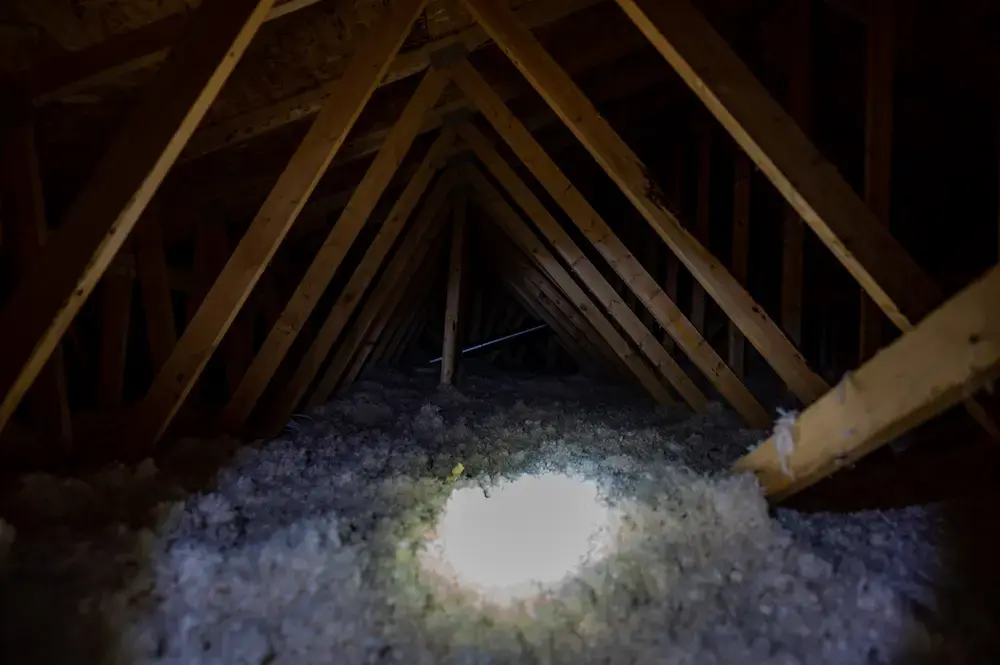A faint scratch or quiet thump can grab your attention instantly, and it happens far more often than many homeowners expect. It’s easy to debate whether it’s a harmless movement in the house or something slipping through hidden spaces. These little mysteries tend to linger until you look closer.
Different wildlife and pests have their own sound signatures. From the clawing of raccoons to the scurrying of mice, each one leaves a distinct audio clue. Those noises often change with the time of day, offering helpful hints.
When you know what to listen for, identifying the culprit becomes much more manageable. Paying attention to the timing and location of the sound can guide you to the source. Understanding the pattern makes choosing the next action much clearer.
Finding the Source of Strange Sounds in Your Home
When something doesn’t sound right, begin by focusing on the basics. Notice the sound’s location, its frequency, and the way it behaves. These small observations often reveal more than expected and can reduce some of the uncertainty. Even a short moment of focused listening can be helpful when pests or wildlife might be nearby.
As you keep track of these details, clarity starts to build. Patterns form naturally, and the clues begin stacking together to shape possible explanations. A simple record of timing and placement can help confirm your observations.
Once you match your notes with the overall pattern of the sound, identifying the source becomes much easier. Understanding what the noise is doing helps guide your next decision. Being prepared can keep minor issues under control before they grow.
Home Wall Sounds Explained: Tips for Identifying Wildlife and Pests
The empty spaces inside walls can house a surprising variety of animals, from tiny bugs to much larger wildlife. Rodents and raccoons easily navigate narrow openings, and bigger animals usually make heavier scratching or thudding noises. These are the types of sounds homeowners most often hear:
- Scratches in Walls
Hearing scratches inside your walls or above the ceiling is enough to make anyone uneasy. Watching to see if the noise is stationary or moving can point you toward the culprit. The pattern of the sound often tells you even more. Creatures typically known for these noises include:- Squirrels: Quick, repeated scratching heard during the day often signals squirrels navigating attic areas or slipping through wall cavities.
- Raccoons: Slow, steady scratching paired with heavier nighttime thuds usually indicates raccoons moving through ceilings or wall spaces.
- Rats: Distinct scurrying, ongoing gnawing, and louder rustling sounds at night commonly point to rats traveling through hidden areas.
- Mice: Fast, light scurrying followed by subtle chewing or faint rustling after dark often suggests mice active within tight, concealed spaces.
- Carpenter Ants: Gentle rustling or faint tapping inside wooden structures often reveals carpenter ants tunneling or moving within beams.
- Heavy Dragging Sounds in the Walls
If you hear deep thumps or gradual dragging noises from the ceiling or floor, it often means a bigger creature is making its way through the area. These sounds are noticeably unlike the swift scurrying of squirrels. Animals known for causing them include:- Opossums: As they travel through wall cavities or attic areas, opossums create slow, consistent thumps, sometimes paired with gentle scratching sounds.
- Raccoons: When exploring ceilings or walls for food, raccoons produce heavy thuds and distinct, continuous scratching noises.
- Bumps in Your Attic or Crashes in the Garage
Attics and garages provide convenient shelter and food opportunities for larger animals, and once inside, their movements carry through the open space. The wildlife frequently causing these sounds includes:- Mice: Small and nimble, mice slip through tight spaces and can produce faint taps or light rattling when they brush against nearby objects.
- Rats: Larger and stronger, rats move through hidden areas and create distinct noises as they chew, travel, and explore.
- Raccoons: Mostly active at night, raccoons often knock over items or rattle containers, and their heavier bodies make their movements easy to notice.
- Opossums: Their awkward, shuffling movements often cause thuds or toppled objects as they navigate dark, cluttered areas in search of food.
- Birds: When trapped inside, birds may flap intensely and strike surrounding surfaces, creating loud, frantic bursts of noise as they try to escape.
- Ticking or Clicking Inside Walls
If your walls produce soft, continuous clicking or ticking, wood-destroying pests may be the cause. The noises often become clearer once the house quiets down at night. Insects frequently responsible include:- Termites: Persistent, soft clicking or tapping within walls is often a sign of termites feeding on wooden structures.
- Carpenter Ants: Light, uneven rustling or faint ticking sounds in wood can indicate active carpenter ants.
- Thuds on the Roof
Strong, rhythmic thuds or persistent banging overhead may mean wildlife is moving across your roof. The structure of most roofs makes them easy entry points for animals in search of shelter or sustenance. Typical offenders include:- Raccoons: Primarily active at night, raccoons produce heavy, measured steps and pronounced thuds, with their larger size making each movement easy to hear.
- Squirrels: Active mostly during the day, squirrels make rapid scampering sounds and occasionally roll or drop nuts, with movements lighter and faster than larger animals.
- Cats: Quiet, swift footsteps may be heard at night or during early morning and evening hours, sometimes accompanied by meowing or purring near doors and windows.
- Tree Branches: On windy days, branches rubbing or tapping against the roof can mimic the sound of animals, making this a common non-pest source of noise.
- Rustling in Vents or Chimneys
Unusual flapping or faint rustling noises can signal that a bird or bat is trapped somewhere in your home. These sounds often come through vents or chimney openings. The wildlife typically causing them includes:- Bats: In confined spaces such as attics or vents, bats create rapid fluttering and high-pitched squeaks as they try to find an exit.
- Birds: When trapped, birds beat their wings forcefully and hit surrounding surfaces like walls, vents, or chimneys, producing loud, frantic sounds as they try to escape.
- Gnawing or Grinding in Walls
Rodents must constantly wear down their ever-growing teeth, which leads them to chew on wood, wiring, and even plastic. This steady gnawing is most noticeable late at night or early in the morning. Animals commonly behind these sounds include:- Rats: Mostly nocturnal, rats produce more pronounced noises as they chew, scurry, and move through concealed spaces after dark.
- Mice: Active mainly at night, mice travel softly while searching for food, creating faint scurrying and light rustling sounds.
- Squirrels: Most active during daylight hours, squirrels generate distinct noises as they move through wall voids or squeeze into tight areas.
- A Buzzing or Humming in the Walls
If a continuous buzz or hum fills the air, stinging insects may be nearby. This sound comes from the rapid motion of numerous wings, most noticeable in warm, sunny weather. Likely insects include:- Wasps: A sharp, ongoing hum often means wasps are active inside a wall cavity, typically working on building a nest.
- Hornets: Strong, persistent buzzing usually points to hornets establishing or expanding a nest within enclosed spaces.
- Bees: A steady, deeper buzzing sound often indicates bees are nesting inside a wall or attic area.
Nervous About Odd Noises in Your Home? Twin Forks Pest Control® Has Solutions
Rustling, banging, or other minor noises can create concern in any home in Southold and Southampton. We determine which animal is causing the disturbance and where it resides. Timely intervention minimizes damage and disruption, and our proven techniques keep wildlife from coming back. Addressing the issue early promotes a secure, worry-free home.
Keep your home safe from unwanted visitors. Reach out to Twin Forks Pest Control® today.

